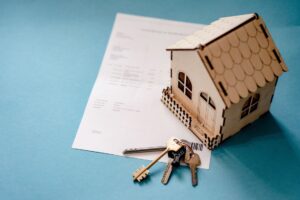Many people argue that commercial real estate is a more lucrative and profitable form of investment than residential real estate, seeing that it not only provides a long-term means of income but most importantly, generates a higher return on investment as well. The main question now is, what is a good yield on commercial property?
What Is a Good Yield on Commercial Property?
A good yield on commercial property usually falls between 5% and 10% per annum, which is significantly higher than the 1% to 3% usually generated by residential properties. Investors should note, however, that the definition of a good yield differs from one property to another, based on certain factors, including the property type and operational costs.

Commercial properties usually have a higher return rate than residential properties as a result of the length of their lease periods. Typically, commercial leases could last for as long as five years or even a decade. This ensues that the property generates a steady income, with little or no expenses on the part of the owner.
What Is the Difference Between Yield and Cap Rate?
Yield is a measure of the returns an investment generates over time, based on its purchase price and current income. Cap rate, on the other hand, is a measurement of the potential rate of return on a property by analyzing its net operating income (NOI) in relation to its current market value.
The major difference between these two is that while yield is calculated based on the purchase price, which is fixed and unchanging, cap rate is calculated based on a property’s current value, which is bound to change over time. These figures are often similar at the point of purchase and then drift apart as time goes on.
Also, a property’s cap rate is mainly calculated to show its potential return, risk level, and value. It is calculated by dividing a property’s net operating income by its current market value. A property’s yield, however, is calculated to show the percentage of return an investor is getting on his investment on an annual basis.
What Is the Difference Between Yield and ROI?
ROI, which is short for return on investment, refers to the total amount earned or lost on investment within a certain period, while yield is a calculation of the income generated on an investment.
In basic terms, ROI seeks to account for the past performance of property by dividing the net income (difference between the current value and the beginning value) by the cost of investment and multiplying it by 100. Yield, however, seeks to account for future performance and rarely changes over a period of time.

What Are the Types of Yield?
There are two major types of yield usually calculated on commercial property investment. While these are quite similar to each other, they are usually based on different metrics, and as a result, their final results differ from each other.
Gross Yield
Gross yield is a calculation of the returns on investment without taking into account any operational costs on the property. To derive a property’s gross yield, all you have to do is divide the annual rent/income it generates by its purchase price, and multiply the derived answer by 100. Let’s take a look at an example:
If a property was purchased at $450,000 and is leased out for $30,000 per annum, to calculate its yield, we simply divide $30,000 by $450,000 ($30,000/$450,000) and then multiply the answer, which is approximately 0.07, by 100 (0.07 ✖ 100). That gives us a yield of 7% per annum.
Net Yield
Net yield is just like gross yield, except that this time, the operational costs incurred on a property are taken into account and deducted. To derive a property’s net yield, you simply deduct all expenditures made on it from its annual income and divide the figure by the purchase price, and finally multiply by 100.
Using the example above, the property was purchased at $450,000 and generates $30,000 in income per year. However, since its purchase, a total of $7,000 has been spent in operational costs, ranging from property and land taxes to interest and mortgage repayment.
To calculate its net yield, $7,000 is deducted from $30,000 ($30,000 -$7,000), producing $23,000, which is then divided by $450,000 ($27,000/$450,000). This gives an answer of 0.06, which is then multiplied by 100 (0.06 x 100). The net yield of the property is thus, 6%.

How to Boost Yield on Commercial Property
Here are a few proven ways that could assist commercial property owners in significantly increasing the yield on their properties:
- Increasing the rent paid by tenants
- Reducing the amount of money spent on operational costs
- Improving the state of your property through renovation, reconstruction, and routine maintenance
- Provide your property with property exposure by hiring the services of a professional real estate agency, such as the Si Vales Valeo Real Estate
Related Questions
How Does Location Affect Yield on a Commercial Real Estate Property?
Properties located in good locations, that is locations that have easy access to basic human needs are more likely to attract a higher number of tenants at a high renting price, than properties located in less desirable locations. Also, operational costs differ from location to location.
Typically, commercial properties in states with higher operational costs, such as taxes, will no doubt, have lower yields. For example, Cincinnati has an average property tax rate of 1.48%, while Ohio has one of 1.57%. This means that the yield of properties in Cincinnati could either be lower or higher than that of other cities in the state.
Conclusion
No matter the risks involved in commercial real estate investments, it is still a solid way of generating long-term income. To ensure that your property has a good yield, you should consider hiring the services of a highly experienced realtor service, such as the Si Vales Valeo Real Estate.






